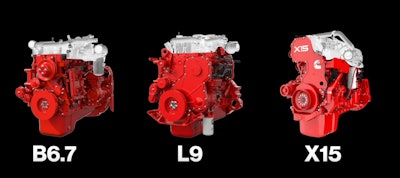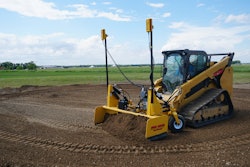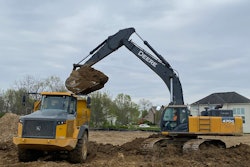
This is big.
Cummins just announced a new engine platform that will help its truck and equipment manufacturer customers and equipment owners transition to alternate and low-carbon fuels without the complexity.
The concept is as simple as it is brilliant.
Below the headgasket on all the new engines, the components are nearly identical. But above the headgasket, the components vary depending on what type of fuel is designated. The engines will be able to run on diesel, natural gas, gasoline, propane or hydrogen.
The company calls the engines “fuel agnostic.”
Simpler solution
The parts commonality with the fuel-agnostic Cummins engines means you stock fewer parts. Your techs don’t have to memorize a different engine design for every fuel source. And for the OEMs who use Cummins, the engines’ footprints remain the same regardless of fuel source.
The OEM benefit is of particular value. Many of them have already faced multiple uncertainties and obstacles in the run-up to Tier 4 Final engines and look with some apprehension about how to manage the transition to alternate and eventually zero-carbon fuels. With the Cummins’ fuel-agnostic commonality, they won’t have to redesign their equipment every time a new fuel or emissions regulation is mandated, the company says.
This design concept will be applied across Cummins’ X-Series, L-Series and B-Series engine platforms. That includes engines used in construction equipment for which the company plans to develop and integrate the new B, L and X platforms over time. “This will be driven by market segment demands across our global business as regulations, policies and customers demand improved fuel-agnostic power units,” the company says.
Don’t wait for perfection
“We know that the planet cannot wait for the perfect solution to happen,” says Srikanth Padmanabhan, president, engine business. “Instead, our approach needs to be a combination of using zero-emissions power where it is available and using cleaner, low-carbon power where it is not.”
The core of this philosophy, says Padmanabhan, is that continuous improvement beats postponed perfection. “This means making leaps when we can, and smaller steps when we cannot. Every decarbonizing challenge is unique, and there is not a one-size-fits all solution.”
Cummins engineers wanted to design products that reduce carbon emissions without saddling customers with a steep learning curve, says Jonathan White, vice president of engine business engineering. “Whether it’s build on the B, L or X platform, these new unified products will have 80 percent parts commonality and look and feel familiar to technicians,” he says.
“The product architecture, engine footprint, and even service intervals are all designed around using the same parts and components where possible. They will be easy to integrate into existing truck models and deliver much lower costs associated with upskilling lower-skill technicians and retooling service locations.”
Lowering entry barrier
The upfront costs of moving to these new fuel-agnostic engines will be much lower than moving to fully electric or fuel-cell options, says Amy Boerger, vice president, North America on-highway. “That’s critical to lowering the barrier to entry for fleets looking to adopt emissions-reducing technology today,” she says.
“We know that some of our customers are ready for fully electric powertrain or hydrogen fuel cell technology now. For those customers, Cummins has products available. For those customers who cannot make that step yet, this new technology approach can help them quickly start reducing their carbon footprint. With our new fuel-agnostic products our customers will be able to customize their own approaches to reaching zero emissions and meeting increasingly stricter emissions certifications.”











